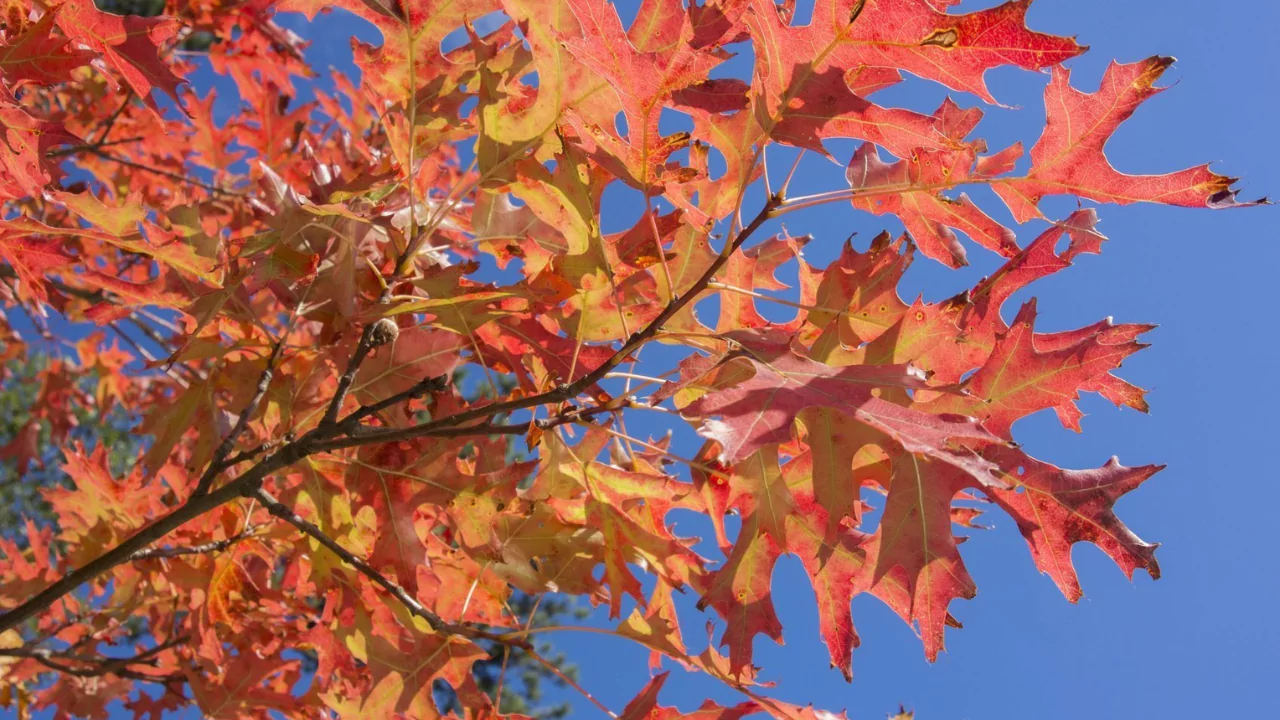
Few trees match the red oak when it comes to offering significant shade; it outgrows most other oaks and has an open crown. Urban trees reach 70 to 80 feet tall while rural specimens may exceed this height.
In late summer, red oaks bear large acorns which contribute to the diet of squirrels and other wildlife. Their summer foliage is glossy green and transforms into brilliant red in autumn. Young trees have silver, smooth bark which darkens and develops ridges as they mature.
There are several red oak subspecies. The Northern red oak and Southern red oak are two of the most common. Quercus rubra Norther red oak is found throughout the Midwestern region and constitutes a significant proportion of the region’s forestry resources. Its hard and durable wood is prized for oak flooring, furniture, and timber.
Norther red oaks are also found in USDA zones 3 to 7. Southern red oak (Quercus falcata Michx) is another example which covers southern regions and extends down to USDA zone 6 to 10.
For photos and detailed descriptions, refer to Identify Oak – The Major Oak Species of North America.
Caring for Red Oak Trees
Red oak is undoubtedly an excellent choice if you are in search of a long-lived and low-maintenance tree. These trees thrive in a variety of soil types, provided the soil drains well.
They particularly favor moist and acidic to neutral soils. Soils that have more than 7.5 pH levels may cause yellowing of leaves due to iron deficiency. Treating this problem is arduous and may lead to gradual decline in tree health.
If you have alkaline soil, your best bet is to consider a different species, such as a bur oak or English oak. Red oaks require full sunlight and should be planted with ample space due to their size when fully grown.
During the first season, water the trees regularly as the roots are establishing. Older trees will not require supplemental irrigation except during droughts. Oak trees should not be fertilized at the time of planting.
For red oak, it is safe to apply all-purpose fertilizer in moderate amounts the following springs, and subsequent ones if growth appears sluggish. Generally, red oaks do not require fertilization, especially if planted in areas with lawn fertilization.
Annual pruning can safely remove dead or diseased branches, vertically growing or rub against each other. Branches should be cut at the collar, which is the small bump where the trunk and branch meet, and ointments or wrappings should not be applied.
While the tree is young, these tasks can be done easily, but older mature trees will require a professional for extensive pruning.
Pests and Disease
Most insect pests and diseases that affect red oak trees are not serious. Minor diseases such as powdery mildew and leaf spot can be best managed by maintaining overall tree health best achieved through proper watering and pruning.
Red oaks are occasionally infested by caterpillars, scale, and leafhoppers, but these are often controlled by birds and other natural predators.
At times, red oaks become sick from cankers that a fungus forms. These cankers appear as white or brown lesions on the bark. Prune the infected branches and dip your pruning tool into a disinfecting solution of one part bleach and ten parts water. Once cankers reach the main trunk of the oak, it can no longer be saved.
One of the most harmful fungal diseases that affect trees, red oaks in particular, is oak wilt. With this disease, infected trees first lose leaves from the upper crown. The dieback progresses downward, and brown streaks may become visible in the sapwood.
A tree care professional should be consulted if oak wilt is suspected. The disease is usually fatal, and the only treatment option is removal of the tree. If there are other oak trees in the vicinity, the removal should be done promptly as those trees may catch the disease too.